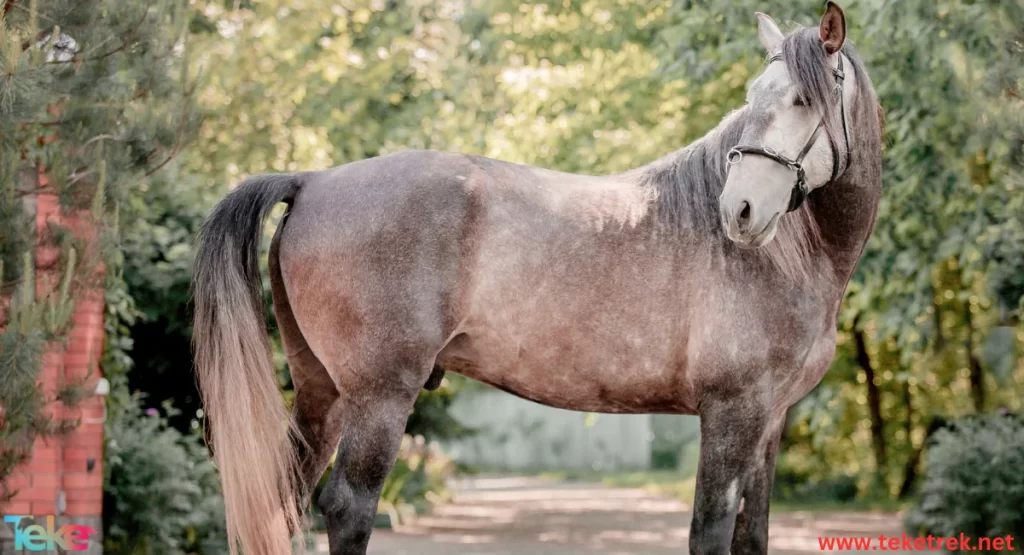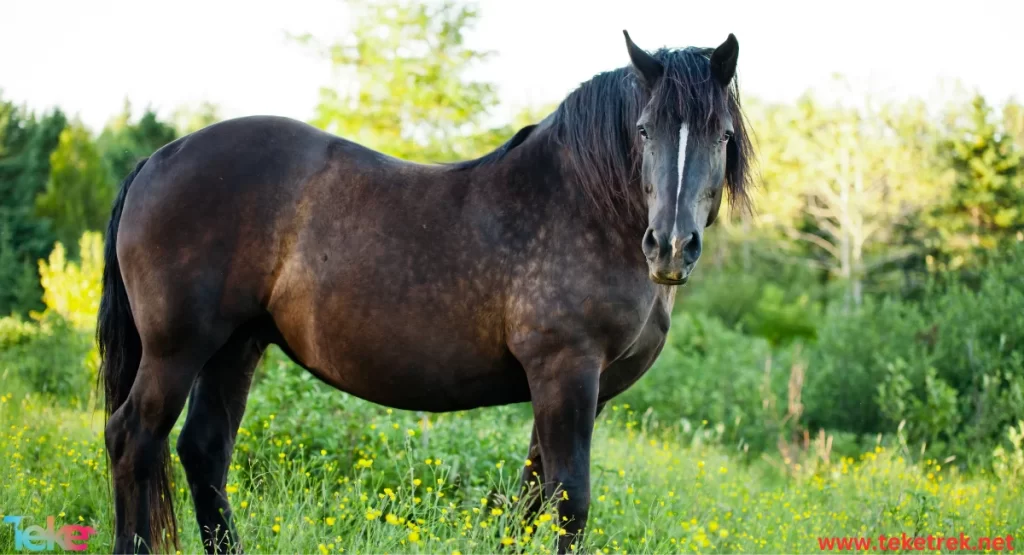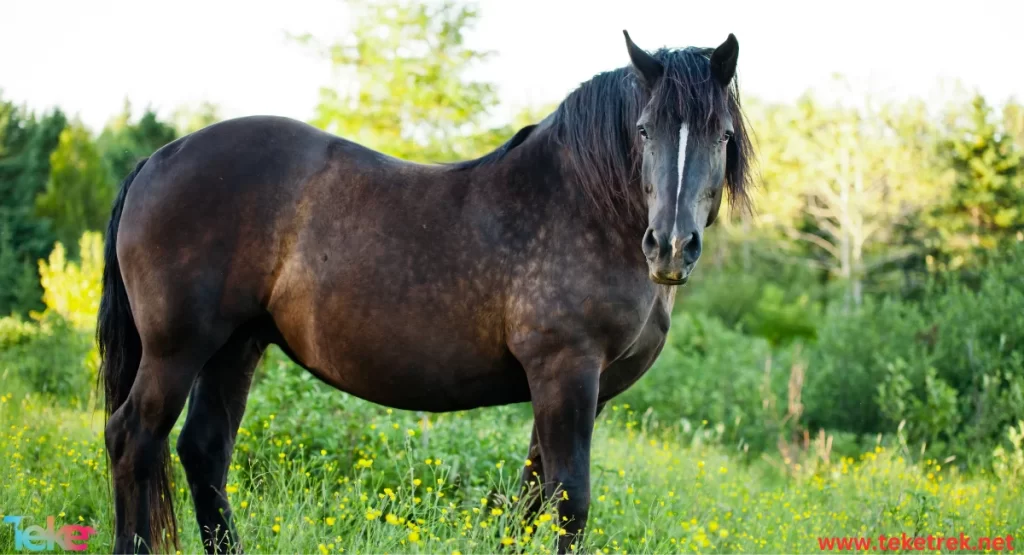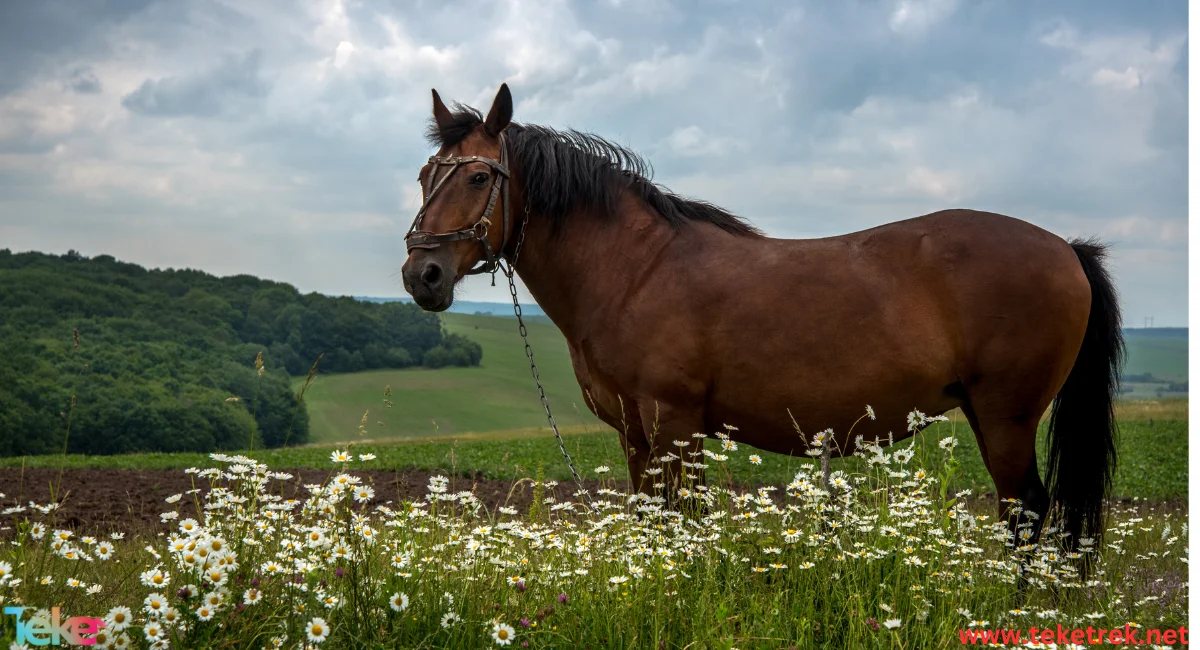The Hanoverian horse is one of the most famous breeds of horses in the world. It is considered a warm-blooded species. In addition, it is one of the famous breeds, known by everyone with its trademark represented by the Latin letter H, which was officially established by Prince George II of England in 1735.
The Hanoverian horse became famous all over the world. After being entered into athletic competitions, it is one of the strong and agile horses. This is due to its hybridization with other breeds, which led to its appearance in this form today.
In this article on TekeTrek, we will learn about the most important characteristics and advantages of this horse, in addition to that we will mention its characteristics, methods of caring for it, and the diseases that it is likely to contract

The most important Hanoverian horse characteristics
The Hanoverian horse is distinguished by its great endurance. In addition to his strength, agility, and beautiful appearance. He achieved impressive results in the sports competitions he participated in, whether they were hurdle jumping or dressage competitions, or even in the famous triathlon competitions.
Both the owners of this type of horse and the riders who ride it confirm that it is an intelligent and stable type. As it is easy to tame, train and control. It responds to all instructions and commands that it is trained to do
What are the specifications of the Hanover horse?
The Hanoverian horse is distinguished by a set of characteristics that make it distinctive at all levels, as follows:
- The Hanoverian horse has a noble exterior, similar to the English purebred horses.
- The Hanoverian horse is distinguished by its agility and dexterity in all the movements it performs.
- The Hanoverian horse has a medium-sized head, with round, expressive and intelligent eyes.
- The Hanoverian horse has a long, muscular neck that reflects strength and solidity.
- It is also characterized by its broad chest.
- The Hanoverian horse has long, well-proportioned legs.
- The Hanoverian horse has a beautiful long tail.
- The height of the Hanoverian horse is between 1.65-1.75 m.
- Hanoverian horse colors are multiple, including black and chestnut, with some white, gray, and red spots.
Care and nutrition for the Hanoverian horse
The Hanoverian horse is raised in its own stables, as it loves the exclusivity of its place. Some points must be taken into account when building a stable, which are as follows:
- It should be fenced with tape to protect the horse from any other animals.
- It is preferable that it be made of wood with proper ventilation and equipped with heating to protect it in cold seasons
- There are rooms designated for dining
- A floor made of wood because cement or other materials disturb the horse and cause him harm.
- Cleaning the stable periodically.
- Place sawdust on the floor and schedule a change from time to time.
- In addition, caring for this type of horse requires special care, represented by a set of the following points:
- Providing appropriate food in all seasons of the year and protecting it from the cold in winter.
- Clean the Hanoverian horse’s skin regularly with a clean brush.
- Exercise regularly while leaving time for rest to maintain his strength and fitness
- Trim and clean the Hanoverian horse’s hooves regularly to prevent any problems in the future.
- Schedule periodic meetings with the veterinarian to detect a disease that may affect him.
- The breeder prepares a diet for the Hanoverian horse. Where the horse depends 80% of its nutrition on grazing. But when the cold seasons come, it is fed as follows:
- A mixture that includes hay (grain straw) with a group of grains and legumes such as wheat, oats and barley.
- Bran and ready-made mixes with salt.
- Vegetables and fruits are estimated according to their weight. 4 kg of it is placed for every 100 kg of the horse’s weight.
- Introducing a group of vitamins and minerals into the diet, especially calcium and phosphorus. Because any deficiency in these elements will have a negative impact and the horse will not be able to bear the loads that the horse receives when running.
Diseases that affect the Hanoverian horse
The Hanoverian horse, like other types of animals, may suffer from one of the diseases that we will mention now, which may affect its health and strength and cause it to lose its characteristics and characteristics. which is next:
- Diphtheria cough disease.
- Dermatitis.
- arthritis.
- Respiratory tract infection.
- Inflammatory bowel.
- Eye infection.
Therefore, it was necessary to take care of the Hanoverian horse, follow health safety rules, monitor the horse, and intervene immediately to ensure its health and safety.


FAQs about the Hanoverian Horse
Some people wonder about information related to this type of horse and that it may form an obsession for them. Therefore, we will mention some of them as follows:
- How can we recognize signs of disease in a Hanoverian horse?
This is done by observing the behavior and appearance of the Hanoverian horse, looking for symptoms such as loss of appetite, fatigue, stress or even any abnormal change in its behavior.
- Can a Hanoverian horse be taken on trips and walks?
Yes, you can, provided that he is trained to walk in nature and deal with rough terrain.
- Can the Hanoverian horse be used in sports competitions?
Yes, it can be used, as this horse is used in many sports, such as jumping over barriers, dressage, and racing, in addition to artistic performances as well.
- Can a Hanoverian horse be used in circuses and shows?
Yes, this horse can participate in this because of its intelligence and high ability to learn and perform.
- Can the Hanoverian horse adapt to different climates?
Yes, he can, provided that he is provided with appropriate care and housing suitable for climate conditions
- Are Hanoverian horses good for beginners?
Yes, they are easy to work with in training.
Conclusion
At the conclusion of this unique article about the Hanoverian Horse, we find that this horse embodies extreme distinction in the world of horses. Thanks to its exquisite beauty, tremendous strength and exceptional performance. He is considered a symbol of elegance and high performance, and he is an ideal partner for equestrian thanks to his intelligence and strong personality. Which made it stand out among other types.
The Hanoverian horse prefers its native habitat in Germany, and its ancient history dating back several centuries. The Hanoverian horse is widely known around the world. It is a horse that combines beautiful appearance and high performance, making it an ideal choice for advanced horsemanship and international championships.
In short, it can be said that the Hanoverian horse is not just an animal, but rather a masterpiece that embodies beauty, strength and elegance at the same time. If you are looking for an ideal partner for you, the Hanover horse is the perfect choice






